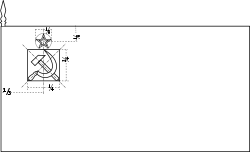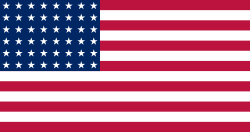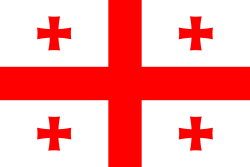Israil Arsamakov
| Israil Arsamakov | |
|---|---|
 Israil Arsamakov (23. února 2017) | |
| Osobní informace | |
| Datum narození | 8. února 1962 (62 let) |
| Místo narození | Grozný |
| Některá data mohou pocházet z datové položky. | |
| Přehled medailí | ||
|---|---|---|
| zlato | Soul 1988 | lehkotěžká váha |
| Mistrovství světa ve vzpírání | ||
| stříbro | Sofie 1986 | lehkotěžká váha |
| Mistrovství Evropy ve vzpírání | ||
| zlato | Karl-Marx-Stadt 1986 | lehkotěžká váha |
Israil Magomedgirejevič Arsamakov (Исраил Магомедгиреевич Арсамаков, * 8. února 1962 Grozný) je bývalý sovětský vzpěrač ingušské národnosti.
Začínal jako zápasník ve volném stylu, pak se v klubu Dynamo Groznyj pod vedením trenéra Ibragima Kodzojeva zaměřil na vzpírání. V letech 1981 a 1982 se stal juniorským mistrem světa. V roce 1982 vytvořil světový rekord v lehkotěžké váze výkonem 179 kg v trhu.[1]
V roce 1986 vyhrál mistrovství Evropy ve vzpírání a byl druhý na mistrovství světa ve vzpírání. Třikrát se stal vzpěračským mistrem SSSR (1981, 1985 a 1988). Na Letních olympijských hrách 1988 v Soulu zvítězil v kategorii do 82,5 kg, když vzepřel 167,5 kg v trhu a 210 kg v nadhozu. Stal se tak vůbec prvním olympijským vítězem pocházejícím z Čečensko-ingušské autonomní sovětské socialistické republiky.[2] Po olympiádě ukončil závodní kariéru a stal se trenérem, rozhodčím a funkcionářem. Vystudoval pedagogický ústav v Grozném, byl předsedou Ruské vzpěračské federace a zakladatelem Kavkazských her.[3]
Reference
- ↑ Общество Динамо Dostupné online
- ↑ Имена Кавказа Dostupné online Archivováno 16. 1. 2020 na Wayback Machine.
- ↑ Ингушский государственный музей краеведения Dostupné online
Externí odkazy
- Israil Arsamakov v databázi Olympedia (anglicky)
- History of Olympic Weightlifting
Média použitá na této stránce
Olympic Rings without "rims" (gaps between the rings), As used, eg. in the logos of the 2008 and 2016 Olympics. The colour scheme applied here was specified in 2023 guidelines.
Olympic Rings without "rims" (gaps between the rings), As used, eg. in the logos of the 2008 and 2016 Olympics. The colour scheme applied here was specified in 2023 guidelines.
flag of the Kingdom of Egypt (1922–1953) and the Republic of Egypt (1953–1958).
flag of the Kingdom of Egypt (1922–1953) and the Republic of Egypt (1953–1958).
US Flag with 48 stars. In use for 47 years from July 4, 1912, to July 3, 1959.
this is the flag of the Soviet Union in 1936. It was later replaced by File:Flag of the Soviet Union (1955-1980).svg.
this is the flag of the Soviet Union in 1936. It was later replaced by File:Flag of the Soviet Union (1955-1980).svg.
Flag of Second Polish Republic and later People's Republic of Poland in period from March 29, 1928 to March 10, 1980. Red shade used here is HTML "vermilion" #E34234. Proportion 5:8.
(c) I, Cmapm, CC BY-SA 3.0
The flag of the Soviet Union (1955-1991) using a darker shade of red.

(c) I, Cmapm, CC BY-SA 3.0
The flag of the Soviet Union (1955-1991) using a darker shade of red.

Flag of Romania, (21 August 1965 - 22 December 1989/officialy 27 December 1989).

Construction sheet of the Flag of Romania as depicted in Decree nr. 972 from 5 November 1968.
- l = 2/3 × L
- C = 1/3 × L
- S = 2/5 × l
Flag of Romania, (21 August 1965 - 22 December 1989/officialy 27 December 1989).

Construction sheet of the Flag of Romania as depicted in Decree nr. 972 from 5 November 1968.
- l = 2/3 × L
- C = 1/3 × L
- S = 2/5 × l
Flag of Iran. The tricolor flag was introduced in 1906, but after the Islamic Revolution of 1979 the Arabic words 'Allahu akbar' ('God is great'), written in the Kufic script of the Qur'an and repeated 22 times, were added to the red and green strips where they border the white central strip and in the middle is the emblem of Iran (which is a stylized Persian alphabet of the Arabic word Allah ("God")).
The official ISIRI standard (translation at FotW) gives two slightly different methods of construction for the flag: a compass-and-straightedge construction used for File:Flag of Iran (official).svg, and a "simplified" construction sheet with rational numbers used for this file.
Autor: Александр Захаров / Мир Тяжёлой Атлетики, Licence: CC BY 3.0
Soviet weightlifter Israil Arsamakov















